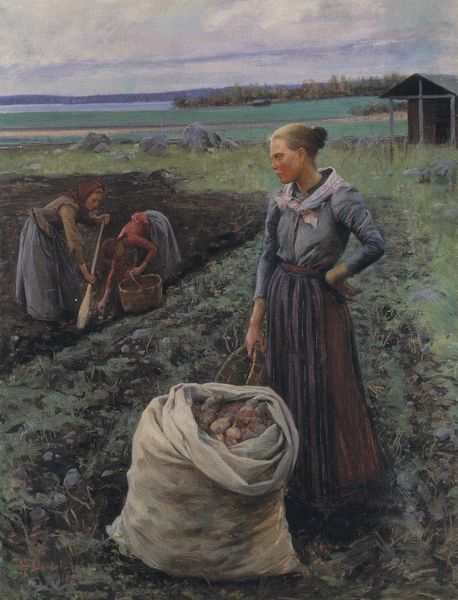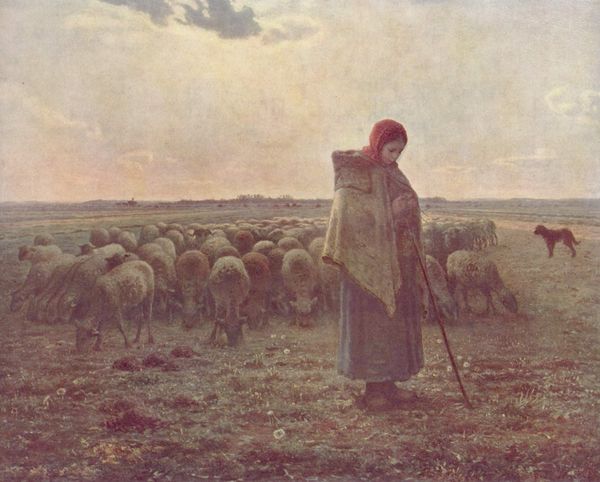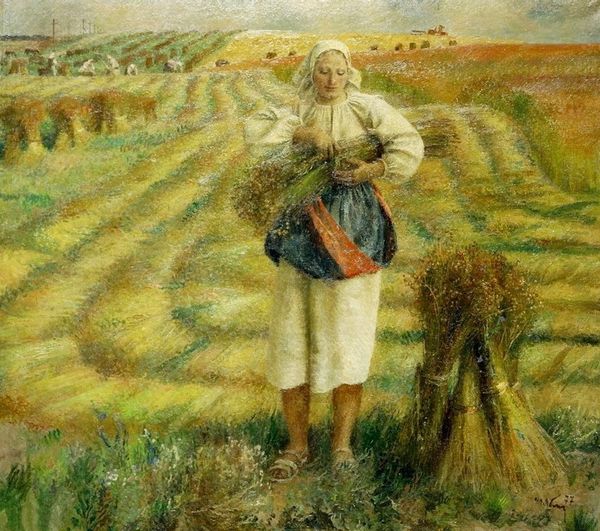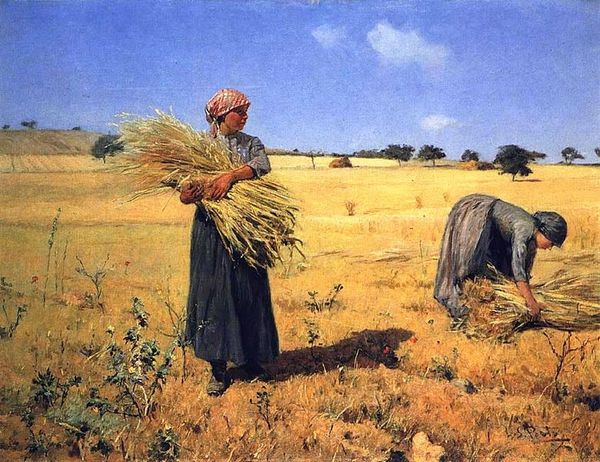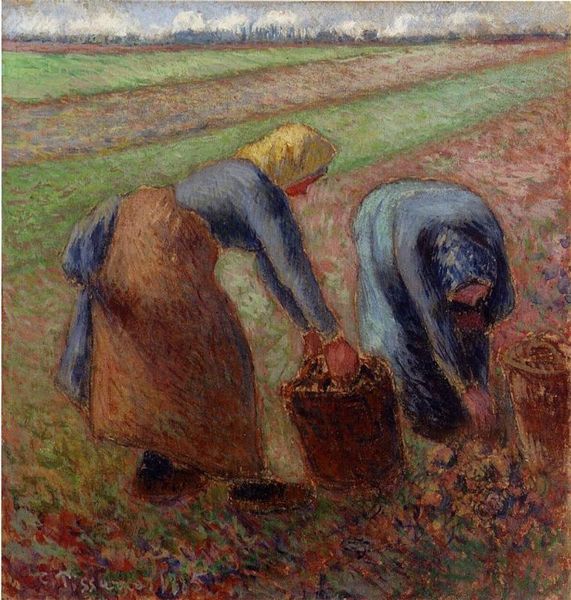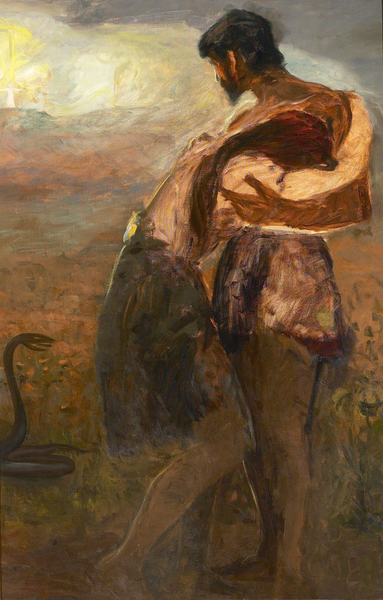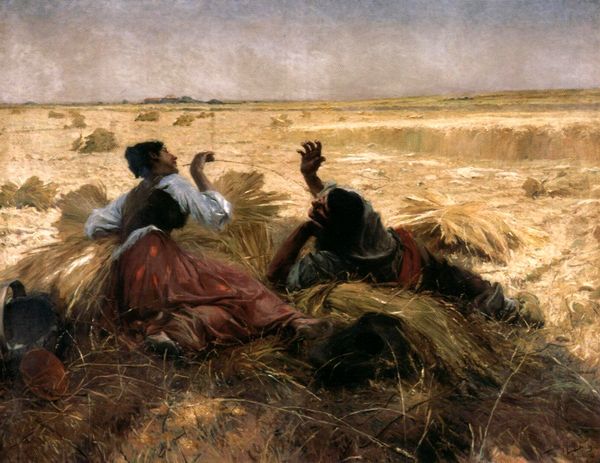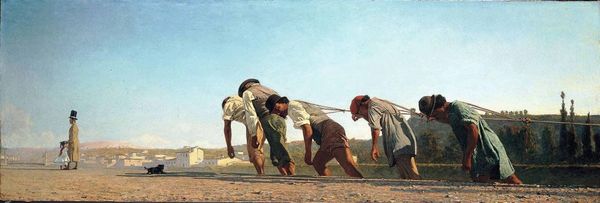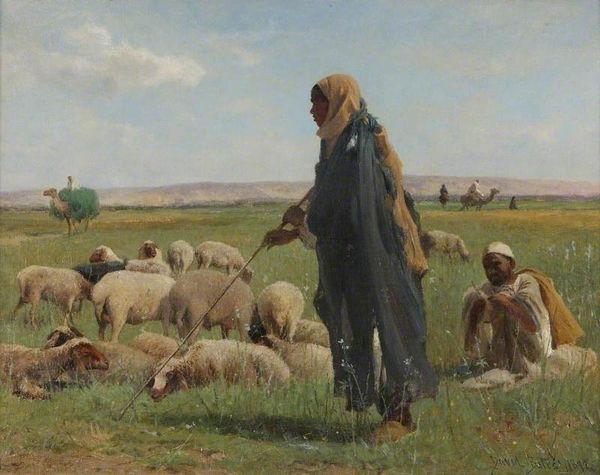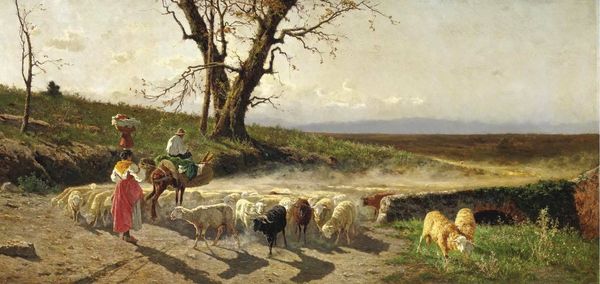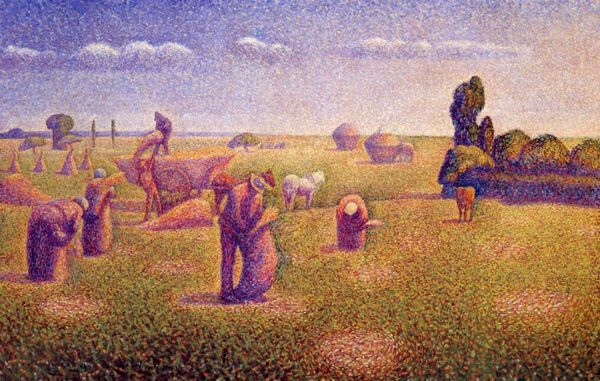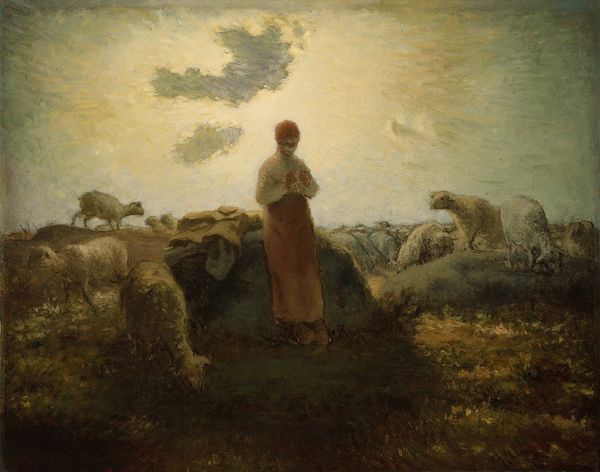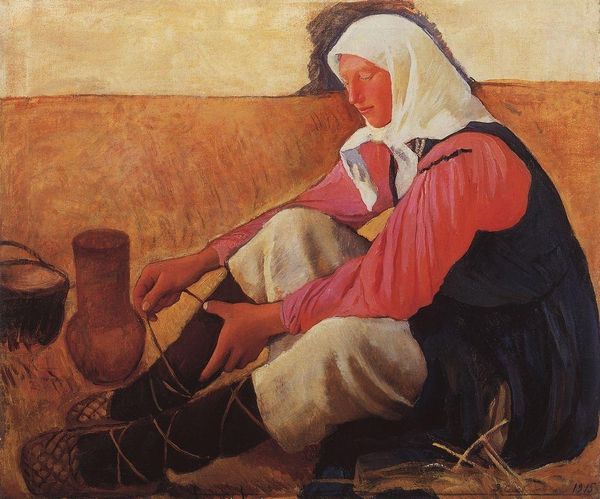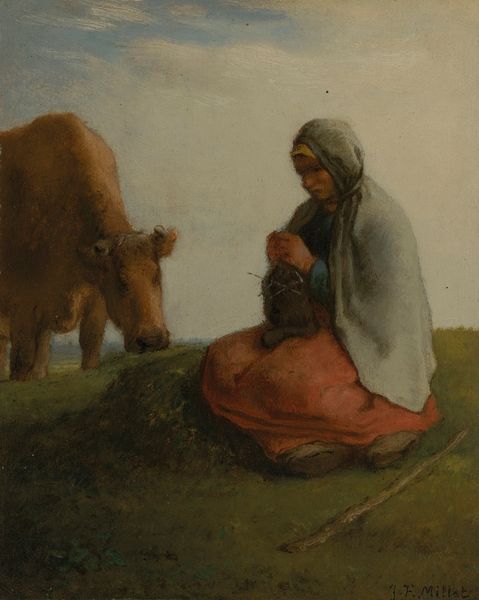
plein-air, oil-paint
#
plein-air
#
oil-paint
#
landscape
#
oil painting
#
underpainting
#
genre-painting
#
academic-art
#
realism
Copyright: Public domain
Curator: Jakub Schikaneder’s "Plečka" presents a scene of rural labor; specifically, a woman tending to crops in a field. The painting style evokes academic-art while seemingly composed ‘en plein air’ with an undeniable sense of realism. Editor: It strikes me immediately as quite somber. The muted tones and the woman’s bowed posture convey a sense of relentless work and perhaps the weight of everyday existence in this setting. It’s an agricultural landscape with several small groups of people inhabiting it at differing distances to our vantage. Curator: Schikaneder, while celebrated as a key figure in Czech modernism, maintained a strong link to traditional techniques and subjects. The materiality of the paint application, particularly the textured brushstrokes visible in the sky and field, lends the work an undeniable sense of physical labor transferred into art making. It's like his underpainting seeks to depict both natural processes and social processes in kind. Editor: I agree, but considering this painting likely dates back to the late 19th or early 20th century, one has to reflect on the political realities and industrialization. Such images provided urban audiences a curated glimpse into rural life. How complicit was Schikaneder to romanticizing labor within this canvas? To what extent are we supposed to celebrate ‘genre painting’ of this kind, if such celebration implies idealizing a lifestyle predicated on manual and arguably exhausting field-labor? Curator: A valid question. Consider how genre painting in academic-art serves as an artistic marketplace to those from rural social classes: it potentially romanticized labor for the urban consumer, but simultaneously presented relatable imageries that validated the sitter’s lifestyle. Also, notice the dress itself: how the garment appears both work-ready and rather elegant for manual labor – highlighting the economic realities behind sourcing a dress with appropriate, material use. Editor: That tension – between documenting the harsh realities of agrarian society and aestheticizing it for a consuming art public—resonates still. Thanks for shedding further light, and emphasizing the work’s cultural work! Curator: It’s this complexity that makes examining its social and material context enriching even today.
Comments
No comments
Be the first to comment and join the conversation on the ultimate creative platform.
